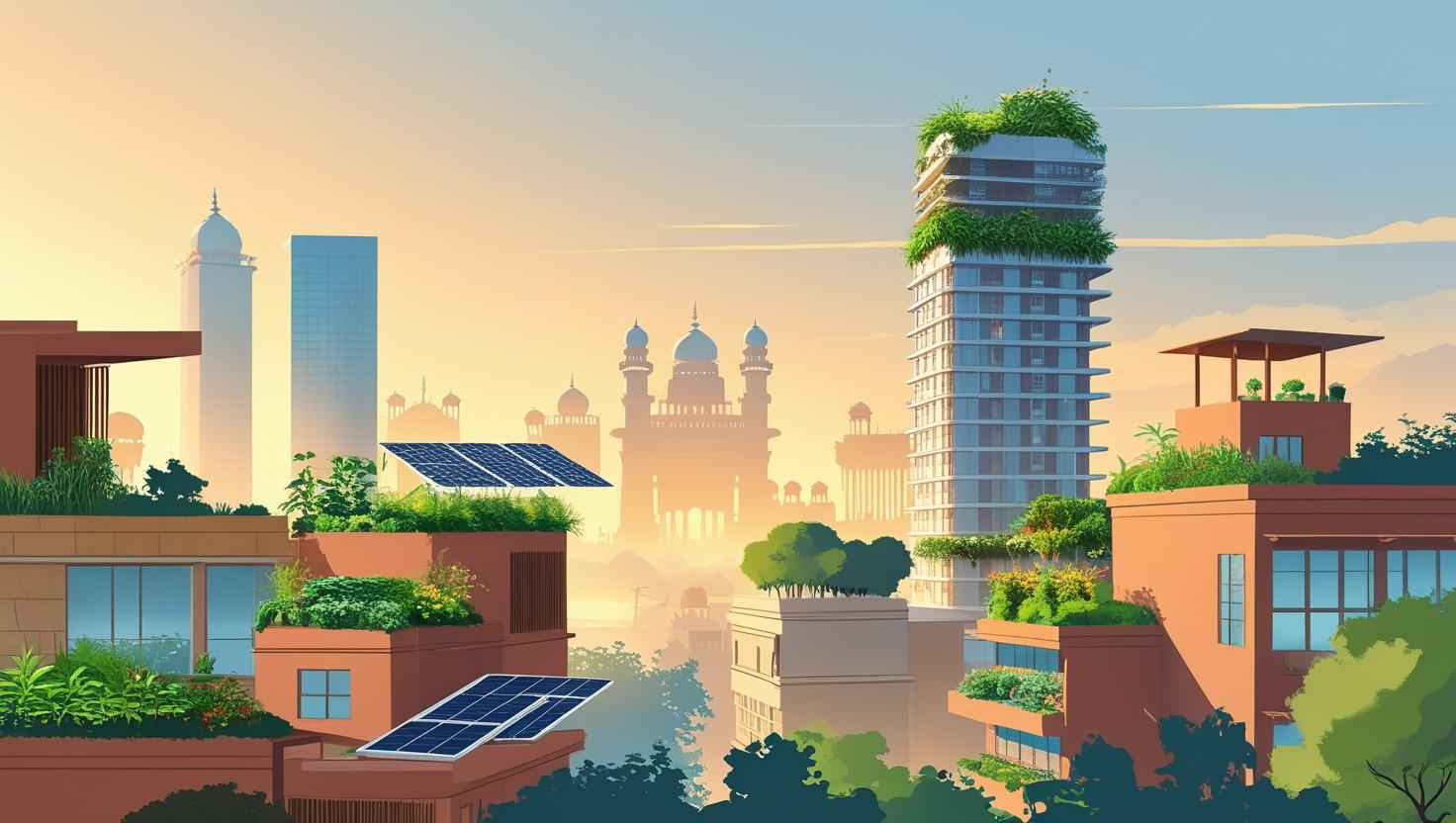Delhi, India’s bustling capital, is experiencing rapid urbanization, leading to increased construction activities. This growth, while beneficial for economic development, poses significant environmental challenges, including resource depletion, increased energy consumption, and escalating pollution levels. In response, sustainable architecture has emerged as a vital approach to mitigate these issues, promoting eco-friendly building practices that harmonize with the environment.
Understanding Sustainable Architecture
Sustainable architecture involves designing and constructing buildings that minimize environmental impact by efficiently using resources, reducing waste, and creating healthy living spaces. This approach integrates renewable energy sources, sustainable materials, and innovative technologies to enhance energy efficiency and reduce carbon footprints.
The Imperative for Sustainable Architecture in Delhi
Delhi’s environmental challenges, such as air pollution and resource scarcity, underscore the need for sustainable building practices:
- Air Pollution: Traditional construction methods contribute approximately 30% to Delhi’s air pollution, primarily due to dust and emissions from construction activities.
Source : Business Today - Resource Depletion: The extensive use of non-renewable materials in conventional construction strains natural resources, leading to environmental degradation.
- Energy Consumption: Buildings consume a significant portion of energy, much of which is derived from fossil fuels, contributing to greenhouse gas emissions.
Key Components of Sustainable Architecture
Implementing sustainable architecture in Delhi involves several critical elements:
- Energy Efficiency: Incorporating design elements that maximize natural light and ventilation reduces reliance on artificial lighting and air conditioning, thereby lowering energy consumption.
- Water Conservation: Implementing rainwater harvesting systems and water-efficient fixtures helps in conserving water, a crucial resource in urban settings.
- Sustainable Materials: Utilizing eco-friendly materials like bamboo, recycled steel, and reclaimed wood minimizes environmental impact and promotes sustainability.
Source : amsindia.co.in - Waste Reduction: Adopting construction practices that reduce waste generation and promote recycling contributes to environmental conservation.
Case Studies: Sustainable Architecture in Delhi
Several initiatives in Delhi exemplify the principles of sustainable architecture:
- Delhi Technological University (DTU): The DTU campus showcases sustainability with over 5,000 trees and eco-friendly buildings. The campus is a model of environmental consciousness and innovation.
Source : The Times of India
Benefits of Sustainable Architecture
Adopting sustainable architecture offers numerous advantages:
- Environmental Benefits: Reduces carbon emissions, conserves natural resources, and minimizes waste, contributing to environmental preservation.
- Economic Benefits: Energy-efficient buildings result in lower utility bills, and sustainable materials often lead to reduced maintenance costs over time.
- Health Benefits: Improved indoor air quality and natural lighting enhance occupants’ health and well-being.
Challenges and the Way Forward
Despite its benefits, sustainable architecture faces challenges in Delhi:
- Higher Initial Costs: Eco-friendly materials and technologies can be more expensive upfront, deterring some developers.
- Lack of Awareness: Limited understanding of sustainable practices among stakeholders can hinder adoption.
- Regulatory Hurdles: Inadequate incentives and support from authorities may impede the implementation of green building practices.
To overcome these challenges, a collaborative effort involving policymakers, developers, architects, and the public is essential. Incentives for green buildings, educational programs, and supportive regulations can accelerate the adoption of sustainable architecture in Delhi.
Conclusion
Sustainable architecture is not merely a trend but a necessity for Delhi’s real estate sector. By embracing eco-friendly building practices, the city can address environmental challenges, promote economic growth, and enhance the quality of life for its residents. The transition to sustainable architecture requires commitment and collaboration but promises a resilient and thriving urban future for Delhi.

